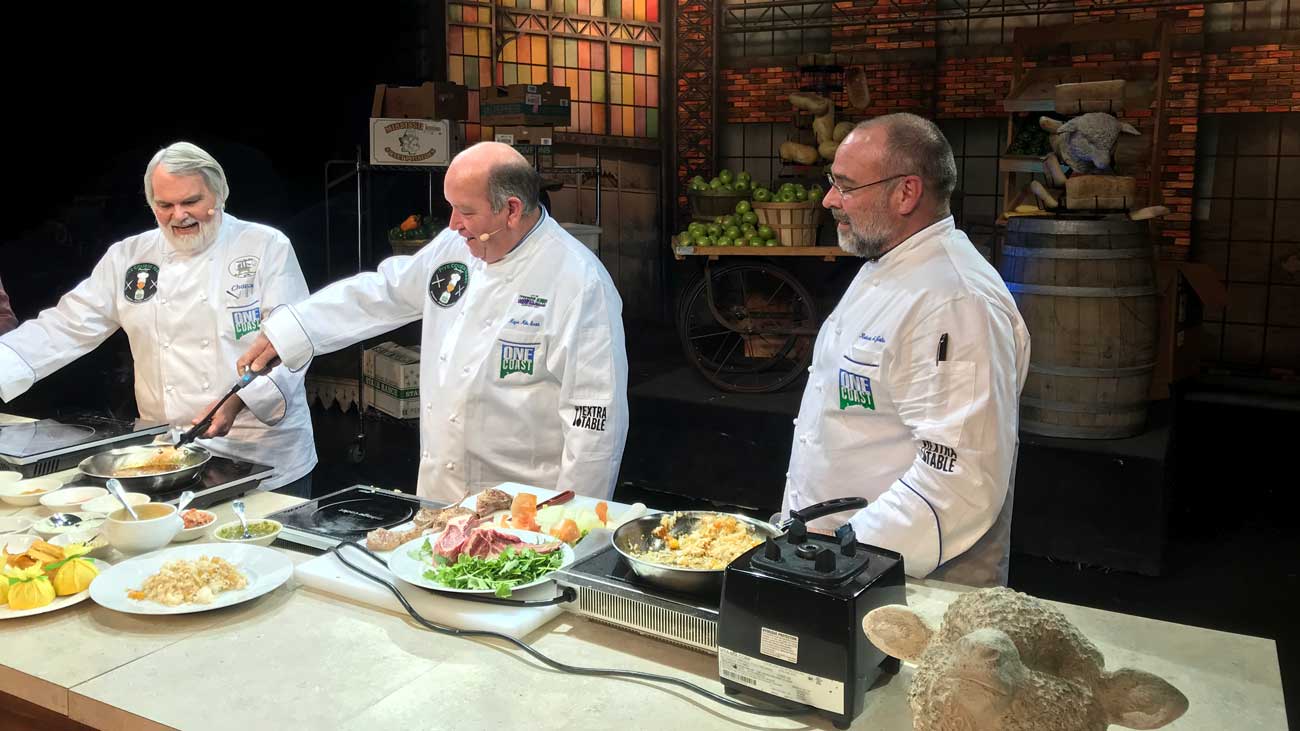Tough Chefs
Chefs are tough. They have to be.
Cooking in a professional kitchen is one of the hardest jobs out there. The pressure is high, the heat is intense, and the skill set needed at the upper level of the restaurant business is earned more than learned.
A lot of people get into the restaurant business because they cook a good steak in their backyard. This is how it happens:
“Say, Joe, that’s a good steak. You ought to open up a restaurant.”
“You think so?” says Joe.
“Sure. You’ll make a mint.”
Then Joe opens a restaurant and quickly learns that being able to cook a good steak is about 5% of the knowledge needed to operate a successful restaurant.
Bankers hate restaurants. It’s because people like Joe are constantly opening restaurants and then going out of business.
I talk to a lot of kids with stars in their eyes. They have seen the Food Network and have romanticized the restaurant business. Most think that when they graduate from chef school or receive a bachelor’s degree in hospitality management, they’ll be floating around their successful restaurant’s dining room, basking in the glow of their adoring and grateful customers, while later taking a seat at their private corner table for dinner.
They quickly learn the truth when they are filling in for a dishwasher who didn’t show up for his Saturday night shift, or mopping up the ladies room, or learning that their chef career wasn’t supposed to include stints of pressure washing greasy mats on the back dock at 11:30 at night.
My title is Executive Chef, which is a fancy way to say, “He doesn’t cook much anymore.” Sure, I put in several years of 90-hour work weeks early in my cooking career, but the truth is, if I got behind my line tomorrow night, I would slow everyone down. My kitchen passed me up years ago. I might be bale to get my service chops back in a matter of weeks, but the truth is, I can better serve my company doing the “vision thing.”
I am a dinosaur. I get to create nowadays. I work mostly in menu development, creating new dishes for my restaurants, and making sure that the dishes I created years ago are still being executed in the way they were developed.
The key to success in the restaurant business is management, management, management.
All problems in the restaurant business can be traced back to management, or lack thereof. Conversely, all successes in restaurants are due to a crackerjack management staff staying on top of food quality, service, consistency, and the “1000 little things” that require constant attention and supervision.
Again, cooking in a high-volume professional kitchen is tough stuff. Chefs have to be strong. Linda Nance, Chef De Cuisine at the Purple Parrot Café, graduated at the top of her class at the Culinary Institute of America in the mid 1980s. She has been cooking in kitchens across the country ever since. She hasn’t slowed up a bit. I’d put her up against any 25-year old male chef and she would run circles around him. She is a great example of how tough the women who cook for a living can be.
The Toughest Chef of the Year Award goes to noted New Orleans chef, Paul Prudhomme. Earlier this year, the father of the Cajun blackening movement was shot while cooking at the Zurich Golf Classic. True Story: A .22 caliber bullet hit just above Prudhomme’s elbow early in the morning while he was stirring seafood in a skillet. The chef felt a sting, shook his arm, and the bullet fell out of the sleeve of his chef’s coat. He kept on cooking for another six hours. Apparently, even golfing in New Orleans is dangerous these days.
Chefs are tough, but taking a bullet for your food and continuing to cook is taking one’s professional commitment and dedication to an entirely different level.
Cracked Pepper Filet with Mustard Cognac Sauce
6, 6-8 ounce filet mignon
2 Tbl N-Stick Grilling Marinade for beef
1 Tbl kosher salt
1/2 cup cracked black pepper
2 tsp olive oil
1/2 tsp fresh garlic, minced
1 Tbl shallot, minced
1/4 tsp salt
1/4 cup cognac
2 Tbl brown sugar
1/2 cup Veal demi glace (if you don’t have time, purchase a high-quality veal stock from a gourmet food store)
1 cup whipping cream
2 Tbl Dijon mustard
Lightly brush the surfaces of the steaks with the marinade and set aside for 45 minutes, the steak should remain at room temperature while marinating.
Season the marinade steaks with the salt and firmly press the black pepper onto the surfaces of the steak
.
Prepare grill and cook steaks over direct high heat untildesired doneness, 8-10 minutes for medium rare. Turn the steaks once while cooking.
For the sauce:
Heat olive oil in a small sauté pot over low heat. Add garlic, shallots, and salt and cook 3-4 minutes, stirring often. Add cognac and brown sugar and cook 5-6 minutes, until thick and syrupy. Add demi glace* and cook until the mixture has reduced by half. Add the cream and cook until the sauce has reduced by half. Remove from the heat and stir in the mustard.
Top each cooked steak with 1-2 ounces of sauce.
Yield:
6 servings
No-Stick Grilling Marinade for Beef
4 Egg Yolks
1 Tbl Dijon Mustard
1/4 cup Balsamic Vinegar
1 cup Canola Oil
1 cup Light Olive Oil
Warm water as needed
2 Tbl Lawry’s Season Salt
2 Tbl Black Pepper, freshly ground
2 Tbl Lemon Pepper Seasoning
2 tsp Garlic Powder
1 tsp Onion Powder
Place the egg yolks, Dijon mustard, and vinegar in a food processor. Blend on medium speed for 1-2 minutes.
Slowly drizzle oils into the mixture, one tablespoon at a time. If the marinade becomes too thick, add 1-2 tablespoons of warm water. Once all of the oil has been incorporated, add seasoned salt, pepper, lemon pepper, garlic powder, and onion powder until incorporated. Store covered in the refrigerator until needed.
Yield:
2 1/2 cups
Veal Stock
4 pounds veal bones
1 gallon cold water
1 pound yellow onion, cut into large pieces
3/4 pound carrots, peeled and cut into large pieces
1/2 pound celery, cleaned and cut into large pieces
3 bay leaves
1/2 bunch fresh parsley
4–6 sprigs of fresh thyme
3 peeled garlic cloves, smashed
1/2 tablespoon cracked black peppercorns
Rinse the veal bones under cold water 4–5 minutes. Place bones in a large stockpot, and cover with the cold water. Place over low medium heat and slowly bring to a simmer.
Using a ladle, skim off any foam that floats to the top and allow stock to come to a very slow simmer with tiny little bubbles gently rising to the surface. Once temperature is reached, and most of the foam has been skimmed, set a timer for 6 hours. Watch carefully and add more water to stock as it cooks.
After 6 hours, skim the stock to remove fat and scum, and then add the remaining ingredients. Top off the stock with water again and let it cook for 12–14 hours. Periodically, check stock to make sure the heat is keeping the stock at a steady slow simmer.
When the timer goes off, turn off heat. Strain the stock and discard all bones and vegetables. Fill sink with heavily iced water and place the container of stock in the ice bath to cool as quickly as possible. Once stock is completely cooled, remove any fat from the surface.
Yield: 3 quarts
When demi glace is needed, simply reduce the finished veal stock by 50 percent.
(In restaurants, veal stocks are cooked 24–36 hours.)



